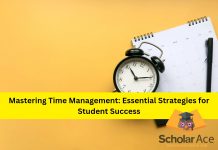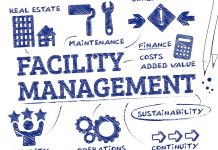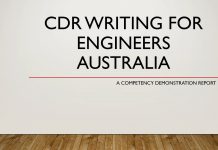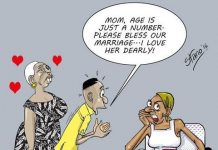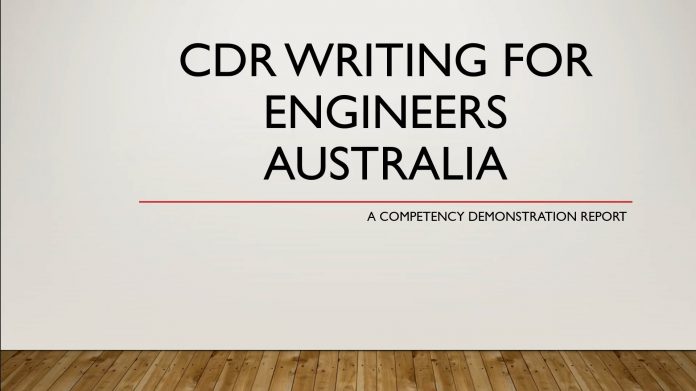Table of Contents
What Is A Competency Demonstration Report (CDR)?
Competency Demonstration Report, more popularly known as the CDR, is a technical document which showcases that your knowledge and skill levels as an engineer, meet the Australian standards. For this purpose, the Engineers Australia (EA) certifies that your understanding of engineering and technical expertise is up to the mark and fulfills the principles of Australia. Before determining if you are the right fit for the professional category you are applying into, the EA evaluates your CDR, which results in forming a basis of the authorization of your immigration process to Australia.
Since your competency demonstration report is truly the backbone of your skilled migration application for Australia, make sure you take it anything but easy. The perfect CDR emphasizes over your achievements and career growth in the best possible way and is a true representation of your technical competencies and engineering skills written in a long essay layout- undoubtedly the best document that can get a professional engineer an engineering job in Australia. That said, your CDR report might be your ticket to obtaining a Skilled Migration Visa in Australia.
How So?
Post submission, the accessing authority i.e – Engineers Australia will check your CDR report for your Skilled Migration Visa in Australia. The authority will rate your report which is the assessing authority of CDR, will check your report for your migration visa. Your CDR will be marked based on the data and information you have shared and will decide whether or not you are suitable for the engineering role and responsibilities you are applying for.
Know What You’re Applying For And The Requirements
In order to score high, you need to precisely know how to write a good Australian immigration CDR report. It demands the right language, correct knowledge, correct knowledge and consideration.
The first step is to know the engineering area you’re applying for. By doing so, you will be able to draft and write the content consequently. For example, if you think you’re the best fit for the profile of an Engineering Manager, read through the critical competencies needed and accentuate on sharing pertinent information.
Download Free CDR Samples For Engineers Australia
Before you sit in front of your laptop and begin writing your report, you need to know all the requirements in advance. Start by understanding the integrates, as suggested by the Migration Skills Assessment (MSA) Booklet. This booklet is restructured whenever the Engineer Australia decides to revise the content inside anything relevant in it. It is essential to understand all those guiding principles. Moreover, engineers ought to follow the formats as per the Migration Skills Assessment. For instance, the Continuing Professional Development (CPD) should be in a listing format.

Documents Needed To Be Submitted With Competency Demonstration Report
- Documented proofs of employment as mentioned in your CDR Report’s career episodes as well as employment evidences for the last one year.
- If applicable, your professional registration certificate
- If applicable, your name change documentation
- TOEFL iBT or IELTS result
- Updated Resume or CV
- Official and complete academic transcripts
- Academic degree certificate
- Your current passport’s page with your name and photo on it
- Latest passport size photo
Guidelines Issued By The EA For Writing An Effective CDR Report
The worst possible risk that comes with trying to write a CDR on your own is a poorly written piece or lack of information that might ruin your chances of getting a Skilled Migration Visa for Australia. Thus, here are some effective tips as mentioned by Engineers Australia (EA) that you must go through very carefully before attempting to write a CDR:
- Your CV/resume is a complete synopsis of your work experience and education as an engineer. It shouldn’t be a list of the projects that you have worked on but should be a sequential list of your employment details. Moreover, it shouldn’t be more than three pages max in any case and must be presented in A4 size pages. For every workplace, it’s important you mention:
- The duration and date of employment
- The location and name of the company along with its contact information
- A short description of the sort of work you did and the job responsibilities defined as per the appointment letter
- Your job title
Next, it’s important you mention your Career Professional Development (CPD) in a listing format, that shouldn’t exceed one A4 size page. The suggested length of every narrative must be between 1,000 to 2,500 words max. Also, a career episode should be written as a first person and focus on what you did & your performance as an individual in the specific case you have set out to articulate.
Number every paragraph you’re narrating of your career episode. Here’s the technique you should follow:
- Career episode 1 (section/paragraphs 1.1, 1.2, 1.3 etc.)
- Career episode 2 (section/paragraphs 2.1, 2.2, 2.3 etc.)
- Career episode 3 (section/paragraphs 3.1, 3.2, 3.3 etc.)
- These section/paragraph numbers would help in cross-referencing while writing or going through the Summary statement. There must be one Summary statement only that must cover all three career episodes. Moreover a career episode must appear as an essay – not a table.
Here’s a helpful CDR video tutorial on YouTube that shreds light over top-notch tips for writing a CDR, so you speed up your Australian immigration CDR process.

Competency Demonstration Report (CDR) Writing For Engineers Australia



How To Write A Successful Competency Demonstration Report
Writing a Well-Organized Continuing Professional Development CPD:
Continuing Professional Development, popularly known as CPD includes everything you did and learnt to stay updated with the latest technical developments and skills in your field post your undergraduate degree.

For Engineers Australia, the CPD has to be given in a listing format and shouldn’t be more than on A4 size sheet page long. This listing might include details like:
- Manuals, journals or books you studied to acquire more knowledge and understanding about your area of expertise
- Any technical inspections, meetings, seminars, workshops, discussions and short-term courses you attended
- Any mentoring or volunteering work you may have done that’s related to your engineering field
- Technical materials you presented and prepared in various symposium, seminars, conferences and courses
- Conferences you’ve attended
- Details of your postgraduate study (even if it was a distant course)
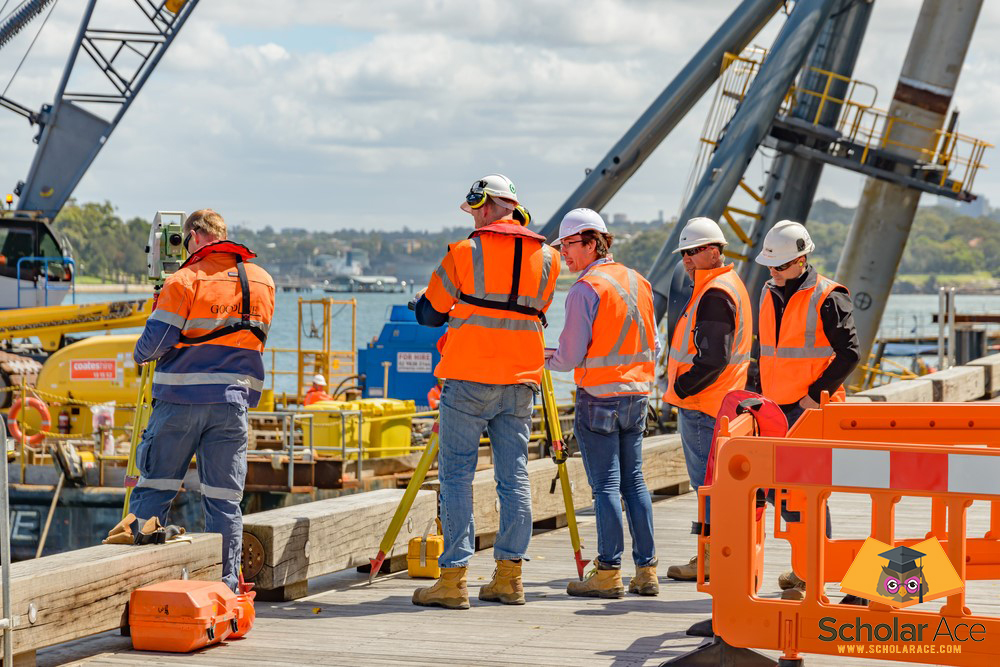
Features Of A Good Competency Demonstration Report
What Are The Features Of A Good CDR?
Let’s get started with significant characteristics of an efficacious CDR:
- Keep in mind that the Career Episodes are written to highlight your skills and talents as an Engineering Manager, Engineering Technologist, Engineering associate or Professional Engineer. Therefore, select them wisely to showcase any relevant competency elements and essentials for the engineering category where you’re applying.
- One key feature of a good competency demonstration report is that it keeps off any unnecessary details that the EA does not ask for. For instance, Engineers Australia does not wish to know the market share or size of your previous employer, your team’s achievements or the company’s history. It solely concerns itself with your responsibilities and role in the organization along with your personal input towards the company as an engineer.
- Your CDR report is must also showcase your communication skills to Engineers assessor. Thus, make sure you’re using accurate Australian English.
- Be prepared to substantiate every claim of yours with evidences and documents. Present proofs of results you have claimed to achieve.
- The recommended writing style by Engineers Australia for Career Episodes is the prescriptive writing style. These episodes must be written in active voice and in first person. This means that you ought to use words like I measured, I planned, I researched etc.
- The last section includes writing a Summary Statement, in which you have to analyze how every paragraph of your written Career Episodes connects to the competency essentials and elements for the Australian Skilled Migration category that you’re applying for. This means that you have to stay pertinent at all times, otherwise you might lose the ‘analysis’ points.
A constructive way by which you can showcase the EA your capabilities as an engineer, is to discuss any technical problems or challenges you went through whilst performing a project/task, gauge the gravity with respect to any losses that your organization might have incurred, the measures you undertook as an engineer to resolve those issues and any recognition’s and rewards you received for your determination.

How To Write Your 3 CDR Career Episode
Your three Career Episodes should be 1000 -2,500 word essays that showcase your progress a professional engineer. While writing a Career Episode report, a Career Episode, a key tip is to always start off by discussing about the project and organization or company you have worked for. In every Career Episode, there are four sections that need to be addressed:
- First is the Introduction section, which ought to be of around 100 words. This must cover the project’s duration and date, organization’s name, location where it happened and your position at the workplace.
- Next is the Background section, which consumes roughly 200-500 words. This is where you’ll describe framework of the project you were working on at that very moment.
- In the third section, which is the Personal Engineering Activity, you will have to provide a narration of the real work you did as an engineer in about 500 to 1000 words. Ensure here that you have addressed all the challenges and problems you encountered and the steps you took to overcome them.
- Lastly, jot down a summarized form of your Career Episode which focuses on all engineering-related talents and competencies, demonstrated by you in that specific narrative.

Moreover, take notes of every calculation, both technical and engineering, that you have done for the task/projects. Keep a track record of the results and processes you performed to reach the final outcome. Furthermore, always remember to number your paragraphs, especially your Career Episodes as per the EA’s guidelines.
Your Career Episode report section must end with you stating all your accomplishments. These may include the final outcomes of the project or the targets or goals you fulfilled.

How To Write A CDR Summary Statement
As the name suggests, the summary statement is a complete summary of your above mentioned 3 CDR career episodes. In this area, you would have to ensure that you have addressed every one of the EA’s competency concerns for the selected ANZSCO code.
The ANZSCO (Australia and New Zealand Standard Classification of Occupations) is a system which analyzes, publishes and collects occupation stats across government bodies. This system is utilized by the Department of Immigration and Citizenship (DIAC) in order to capture in information in every citizenship, settlement and visa programs. It is important to note that the ANZSCO doesn’t measure the level of skills of a person, it instead refers to the skills level that is usually needed to competently carry out the tasks and projects of a specific occupation. Occupations which stand at Skill Level 1 for example, possess a level of skills which corresponds with a bachelor’s qualification or a higher degree.
GET YOUR QUOTE NOW
Your summary statement must also provide cross references of every paragraph of your 3 career episodes. Additionally, don’t start any extra argument in your summary statement- the purpose of this summary is only to effectively summarize your CDR and you shouldn’t distract yourself from that end goal. Following are the three types of elements that you must highlight in your summary statement:
- Your Engineering skills and knowledge
- How have you applied your engineering capabilities (their application)
- Your personal and professional characteristics
Once you’re done with all three sections, make sure you revise your report at least twice, so it is free from any sort of gaps or discrepancies. Also, do not forget to check your report for plagiarism – even if you haven’t taken any help from internet samples or sources. Engineers Australia has top-notch software to catch any sort of presenting plagiarized content and presenting them with plagiarism will result in banning of your Competency Demonstration Report.
The procedure is a tad bit complicated and it demands efforts but it is not impossible. Therefore, if you get stuck at any point and have no idea on how to go about your CDR, do not get discouraged. Keep trying and don’t feel shy to ask for help.
Here some excellent CDR YouTube video tutorials with sample reports for engineers wishing to migrate to Australia including sample write-ups for Electrical Engineer, Electronics Engineer, Mechanical Engineer, Telecommunications Engineer, Civil Engineer and Aeronautical Engineer.

What Are The Causes Of Engineers Australia CDR Rejection?
Here’s a rundown of the significant reasons why a competency demonstration report gets rejected:
- When your report includes too many tables, photos or diagrams, it becomes tough for the assessors to recognize the competency essentials they’re searching for.
- You haven’t thoroughly read the descriptions of the ANZSCO codes first and the Engineer Australia’s guidelines as mentioned on their website – you need to go through these details, decide which portions of your career growth can best define these specific competencies and then work on your essay draft.
- Your Career Episodes must have a clear introduction, key engineering activities that you’ve set out to define, and lastly a Summary. Your text must cover as ample competency elements as per Summary Statement format.
- The recommended word limit for every Career Episode is between 1,000 to 2,500 words. You would have to provide every piece of information that is required and address all of the EA’s competency issues well within this word count.
- Make sure to fill your Career Episodes with problem statements and also mention the relevant measures you took to resolve them. Also include the project/task details you were involved with and the exact roles and responsibilities you carried out in the project, must form the core of your Career Episode.
- Lacking of technical design: Your CDR report must be sound technically – if you do not write a technical write-up, your CDR will be rejected for sure.
- You should strictly stick to the format as prescribed by Engineer Australia and ensure that your work has no minor mistakes in spelling or grammar and the CDR is in Australian English.
- Plagiarism: We just can’t stress on this point enough – do not write someone else’s report or work as yours! When it comes to the Australian Migration Assessment, plagiarism is a key issue. Do not copy and paste report and project facts from internet sources or CDR. Yes you can read some samples on the net to get a brief idea but copying it as your own is honestly the biggest blunder you could do.
- Your CDR career episodes ought to be extremely different. One career episode ought to have one sort of project only. Moreover, your career episodes must be personal – you should discuss what you did as an individual and not what you performed as a group.
- Lastly, if your CDR isn’t supported by the mentioned required documents, there’s a high probability of your report getting rejected.
Here’s a helpful video on YouTube that we’ve found extremely helpful and imparts thorough understanding about the reasons for Engineer Australia CDR rejection.

Why Use Engineers Australia Fast Track Assessment?
CDR Migration Skills Assessment (MSA) applications might take some time to process. Nonetheless, you can opt for a fast track application and get yours allocated to an accessor for further processing in 20 working days. All you have to do for Engineers Australia fast track assessment option is to simply click on “Fast track” while completing your online application.
Turnaround Time For Typical CDR MSA Applications
Engineers Australia Assessment time for Accredited Australian and Accord qualifications usually takes around 7 weeks, before your application is allotted to a case officer.
Engineer Australia Assessment time for non-accredited qualifications usually take 9 weeks before your application is allocated to a case officer.
Remember – you have the option of minimizing the standard turnaround time and get your application allocated to a case officer within 20 working days by using the EA’s fast track service.

Verification Of Engineers Australia Assessment Outcome Letter
Once your assessment procedure is under successful process, you will receive an assessment outcome letter via email, suitable for Australian migration purposes. For letters that can’t be issued through electronic means will be dispatched by ordinary post and a service fee maybe charged for this. You can furthermore confirm the outcome letters by entering your application details on the Engineer Australia Assessment Outcome Letter Verification page.
Although the outcome letter remains valid for an indefinite period of time for the EA, the Department for Immigration and Border Protection (DIBP) fiats that the assessment notification should be no more than three years old as per the date of your migration application. You can also verify your assessment outcome letter’s validity online, and can view your letter on the EA’s myPortal link, given on the website.
The letter contains the assessment of the assessor, who has addressed all competencies demonstrated by you in your competency demonstration report and that they meet the existing requirement for your categorized occupation. Moreover, the letter states that as per the General Skilled Migration point test, the qualification of the candidate is evaluated according to the Australian Qualification Framework level (AQF) as the chief relevant qualification. You need to apply and pay for this extra assessment service, called the Relevant Skilled Employment. Assessing your work experience is only relevant if you want to claim additional points for your engineering work experience in your migration visa application.
Please note: Your employment won’t be reflected in your migration skills assessment outcome letter and will only be assessed for added support of your outcome if you have applied for it. Also, if you do not want to claim any point for your work experience, it isn’t necessary to go via the work assessment process. Thus it is not compulsory to pay the fees.
Download Free CDR Samples For Engineers Australia
Updated Fee Structure Table For 2018-2019 As Per The EA’S Website
Competency Demonstration Report (CDR) Assessment Fees
| MSA Fees 2018 – 2019 (Valid from 1 September 2018) | Fee Excl. GST | Fee Incl. GST |
| Standard Competency Demonstration Report | $784.00 (AUD) | $862.40 (AUD) |
| Competency Demonstration Report + Relevant Skilled Employment Assessment (+$340 Excl. GST) | $1,124.00 (AUD) | $1,236.40 (AUD) |
| Competency Demonstration Report + Overseas PhD Assessment (+$220 Excl. GST) | $1,004.00 (AUD) | $1,140.40 (AUD) |
| Competency Demonstration Report + Relevant Skilled Employment Assessment (+$340 Excl. GST) + Overseas PhD Assessment (+$220 Excl. GST) | $1,344.00 (AUD) | $1,478.40 (AUD) |
Australian Accredited Engineering Qualification Assessment Fees
| MSA Fees 2018 – 2019 (Valid from 1 September 2018) | Fee Excl. GST | Fee Incl. GST |
| Australian Engineering Qualification Assessment | $260.00 (AUD) | $286.00 (AUD) |
| Australian Engineering Qualification Assessment + Relevant Skilled Employment Assessment (+$340 Excl. GST) | $600.00 (AUD) | $660.00 (AUD) |
| Australian Engineering Qualification Assessment + Overseas PhD Assessment (+$220 Excl. GST) | $480.00 (AUD) | $528.00 (AUD) |
| Australian Engineering Qualification Assessment + Relevant Skilled Employment Assessment (+$340 Excl. GST) + Overseas PhD Assessment (+$220 Excl. GST) | $820.00 (AUD) | $902.00 (AUD) |
International Accords Qualification Assessment Fees
| MSA Fees 2018 – 2019 (Valid from 1 September 2018) | Fee Excl. GST | Fee Incl. GST |
| Washington/Sydney/Dublin Accord Qualification Assessment | $420.00 (AUD) | $462.00 (AUD) |
| Washington/Sydney/Dublin Accord Qualification Assessment + Relevant Skilled Employment Assessment (+$340 Excl. GST) | $760.00 (AUD) | $836.00 (AUD) |
| Washington/Sydney/Dublin Accord Qualification Assessment + Overseas PhD Assessment (+$220 Excl. GST) | $640.00 (AUD) | $704.00 (AUD) |
| Washington/Sydney/Dublin Accord Qualification Assessment + Relevant Skilled Employment Assessment (+$320 Excl. GST) + Overseas PhD Assessment (+$220 Excl. GST) | $980.00 (AUD) | $1,078.00 (AUD) |
GET YOUR QUOTE NOW
Additional Assessment Services Fees
| MSA Fees 2018 – 2019 (Valid from 1 September 2018) | Fee Excl. GST | Fee Incl. GST |
| Separate Relevant Skilled Employment Assessment | $390.00 (AUD) | $429.00 (AUD) |
| Separate Overseas PhD Assessment | $270.00 (AUD) | $297.000 (AUD) |
| Separate Relevant Skilled Employment Assessment + Overseas PhD Assessment | $610.00 (AUD) | $671.00 (AUD) |
Administrative fees
| MSA Fees 2018 – 2019 (Valid from 1 September 2018) | Fee Excl. GST | Fee Incl. GST |
| Informal Review | $280.00 (AUD) | $308.00 (AUD) |
| Formal Appeal | $530.00 (AUD) | $583.00 (AUD) |
| Standard Administration Fee | $110.00 (AUD) | $121.00 (AUD) |
| Fast Track Fee | $300.00 (AUD) | $330.00 (AUD) |

Don’t forget to check out Engineer Australia’s website and CDR writing techniques video tutorial on YouTube for further information about this technical report and have yourself travel to the destination of your dreams in no time.

If you have further questions or need any help in writing of your CDR for Engineers Australia, Feel free to CLICK HERE or Comment below. We will get back to you as soon as possible.













